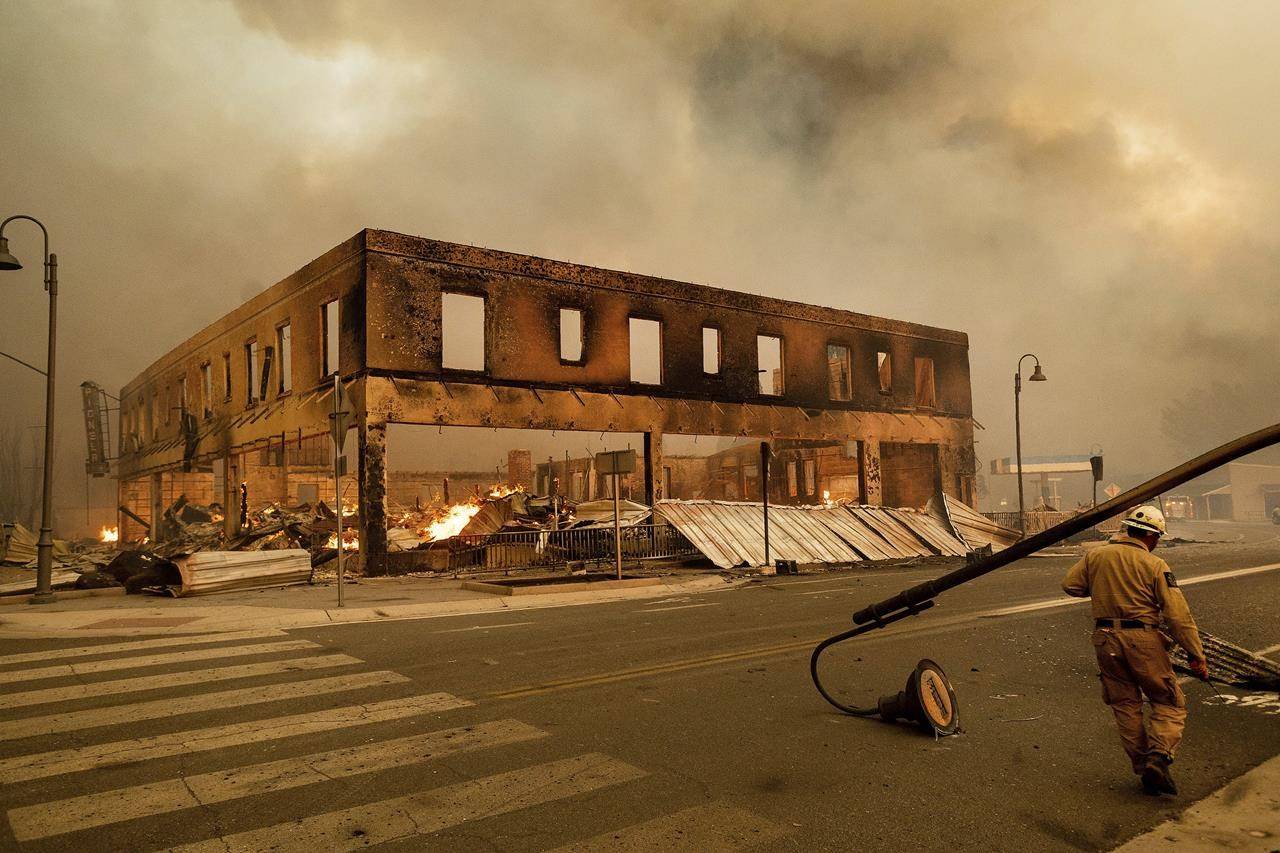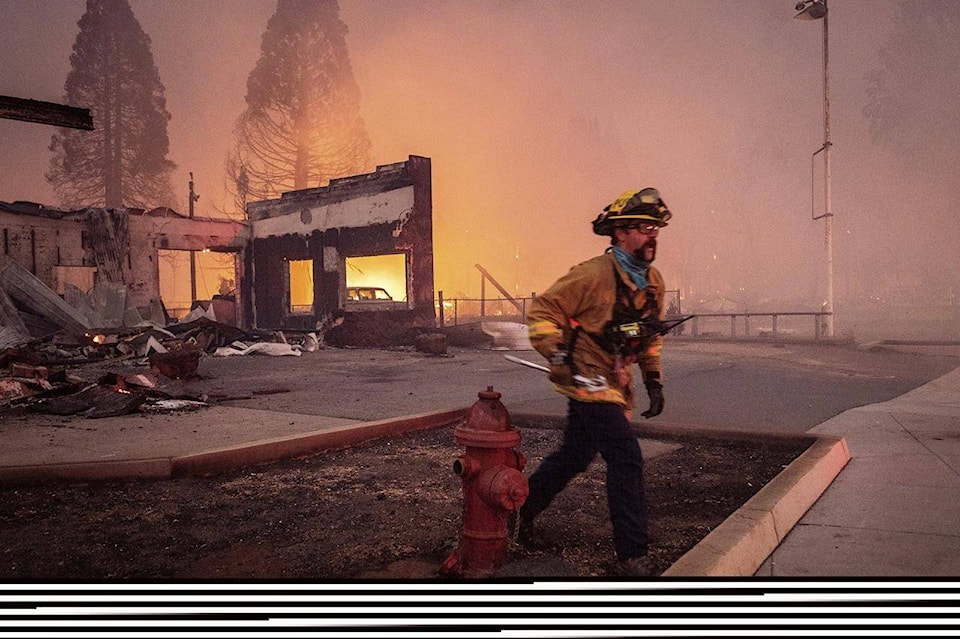A 3-week-old wildfire engulfed a tiny Northern California mountain town, wiping out historic buildings and leaving much of the downtown in ashes, while a new wind-whipped blaze also destroyed homes as crews braced for another explosive run of flames Thursday in the midst of dangerous weather.
The Dixie Fire, swollen by bone-dry vegetation and 40 mph (64 kph) gusts, raged through the northern Sierra Nevada community of Greenville on Wednesday evening. A gas station, hotel and bar were among many fixtures gutted in the town, which dates to California’s Gold Rush era and has some structures more than a century old.
Plumas County Supervisor Kevin Goss wrote Thursday on Facebook that the fire “burnt down our entire downtown. Our historical buildings, families homes, small businesses, and our children’s schools are completely lost.”
Officials could not immediately say how many buildings were razed, but photos and video from the scene indicate the destruction was widespread.
“We lost Greenville tonight,” U.S. Rep. Doug LaMalfa, who represents the area, said in an emotional Facebook video. “There’s just no words.”
As the fire’s north and eastern sides exploded Wednesday, the Plumas County Sheriff’s Office issued a warning online to the town’s approximately 800 residents: “You are in imminent danger and you MUST leave now!”
The growing blaze that broke out July 21 was the state’s largest current wildfire and had blackened over 504 square miles (1,305 square kilometers). It had burned dozens of homes before making its new run.
“We did everything we could,” fire spokesman Mitch Matlow said. “Sometimes it’s just not enough.”
About 100 miles (160 km) to the south, officials said between 35 and 40 homes and other structures burned in the fast-moving River Fire that broke out Wednesday near Colfax, a town of about 2,000 residents. Within hours it ripped through nearly 4 square miles (10 square kilometers) of dry brush and trees. There was no containment and about 6,000 people were under evacuation orders across Placer and Nevada counties, according to the California Department of Forestry and Fire Protection.
Early in the week, some 5,000 firefighters had made progress on the Dixie Fire, saving some threatened homes, bulldozing pockets of unburned vegetation and managing to surround a third of the perimeter.
More fire engines and bulldozers were being ordered to bolster the fight, Matlow said. On Wednesday, the fire grew by thousands of acres and an additional 4,000 people were ordered to evacuate, bringing nearly 26,500 people in several counties under evacuation orders, he said.
Red flag weather conditions of high heat, low humidity and gusty afternoon and evening winds erupted Wednesday and were expected to be a continued threat.
Winds were expected to change direction multiple times on Thursday, putting pressure on firefighters at sections of the fire that haven’t seen activity in several days, officials said.
The trees, grass and brush were so dry that “if an ember lands, you’re virtually guaranteed to start a new fire,” Matlow said.
The Dixie Fire was running parallel to a canyon area that served as a chimney, making it so hot that it created enormous pyrocumulus columns of smoke. These clouds bring chaotic winds, making a fire “critically erratic” so it’s hard to predict the direction of growth, he added.
Dawn Garofalo fled with a dog and two horses from a friend’s mountain property, and watched the soaring cloud grow from the west side of Lake Almanor, a popular summer resort area with boating, fishing and camping.
“There’s only one way in and one way out,” she said Wednesday. “I didn’t want to be stuck up there if the fire came through.”
And about 150 miles (240 kilometers) to the west of the Dixie Fire, the lightning-sparked McFarland Fire threatened remote homes along the Trinity River in the Shasta-Trinity National Forest. The fire was only 7% contained after burning through nearly 33 square miles (85 square kilometers) of drought-stricken vegetation.
Similar risky weather was expected across Southern California, where heat advisories and warnings were issued for interior valleys, mountains and deserts for much of the week.
Heat waves and historic drought tied to climate change have made wildfires harder to fight in America’s West. Scientists say climate change has made the region much warmer and drier in the past 30 years and will continue to make weather more extreme and wildfires more frequent and destructive.
More than 20,000 firefighters and support personnel were battling 97 large, active wildfires covering 2,919 square miles (7,560 square kilometers) in 13 U.S. states, the National Interagency Fire Center said.
—Christopher Weber And Noah Berger, The Associated Press
RELATED: Damage estimate for fire-razed Lytton reaches $78 million
RELATED: Canada, U.S. seek new approach as blistering 2021 wildfire season drains resources

